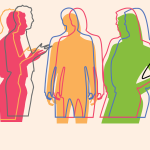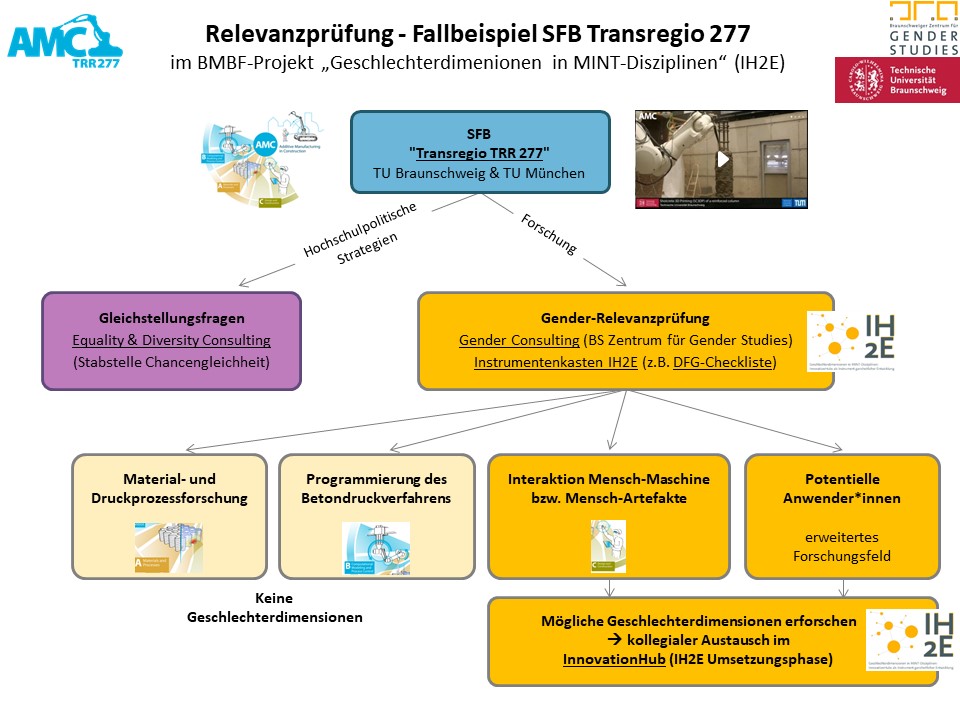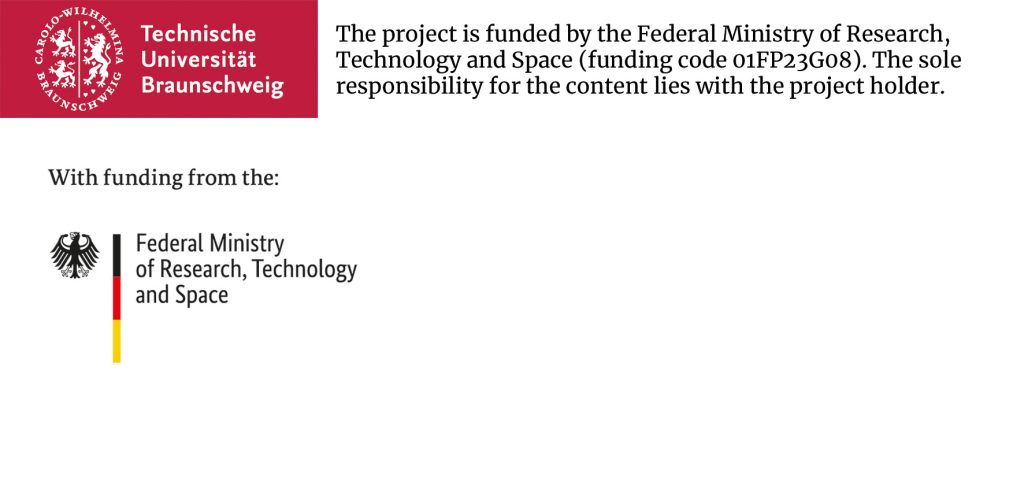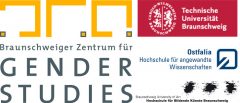
The Braunschweig Centre for Gender Studies (BZG) offers gender consulting to all researchers. In addition to gender, other corresponding intersectional dimensions such as age, social/economic status, and so forth, are also taken into consideration. Please, get in touch with us, if we can be of any help: gediment@tu-braunschweig.de
Services offered
- Explaining the significance of gender dimensions in STEM research and other issues
- Joint assessment of the relevance of gender dimensions and diversity in a specific research project
- Search for literature if required
- Placement of specialist expertise and cooperation partners
Diversity as a criterion for research funding
„To improve the quality of research and avoid ‘blind spots'”, the German Research Foundation (DFG) advises that “reflection on gender and diversity should be an integral part of the preparation of every research project and – where relevant – be addressed in the proposal.” (translation by GeDiMINT, see DFG: Diversity dimensions)
Neglecting gender dimensions cannot only have serious consequences for research results [>>], but can also lead to funding applications not being approved or products being unfit for a market of diverse users. The German Research Foundation (DFG), the European Union (EU), Exzellenzinitiative and other research funding bodies require the relevance of gender dimensions to be examined as standard [>>]. In order to avoid gaps in research in this area at TU Braunschweig and to continue to be a well-funded and internationally-connected institution, research must consider the needs of all people (including sex/gender) and the relevance of diverse lived realities.
Checklists and subject-specific information
We recommend the DFG´s short and easy-to-use checklist for assessing the relevance of gender and diversity in research projects or plans, which is also available in English.
We also highlight the platform Gendered Innovations of Stanford University, which brings together numerous case studies in STEM research and development. It also offers helpful tools for designing and submitting proposals.
So far, as a project, we have had the opportunity to give counsel to several projetcs at our university (already at the stage of the first funding phase IH2E).
Here are two examples:
Example 1: 3D-concrete Printing (Consulting TRR 277 AMC)
In the STEM disciplines, many research projects are not directly related to humans or animals, such as in the development of new formulas for concrete that is an aspect of AMC research. In these cases, gender or other dimensions of diversity such as social background and age do not play a role and no further relevance assessment is required. However, as soon as humans or animals are involved as a research object, research target, or there are potential users of the research results, the gender relevance has to be assessed. If, for example, it is about human-machine interaction in the case of a concrete 3D printer and the application of production technology in the construction industry, it must be empirically examined whether gender dimensions have an influence. For example, different physical characteristics (age, strength, size) – not necessarily linked to gender – can influence the operation of the machine or social factors can change its use and acceptance. Case studies from STEM research (e.g. from the Gendered Innovations project) show that this is more often the case than generally assumed.

The graphic illustrates the result of the consulting discussion in the Collaborative Research Centre (CRC) Transregio 277 “Additive Manufacturing in Construction” during the first funding phase; click here for the interactive pdf.
Example 2: Acoustic-Simulation (Prof. Dr. Langer, TRR 364)
During the application phase for a DFG Collaborative Research Center (SFB), the project TRR 364 „Synergies of Highly Integrated Transport Aircraft“ (SynTrac) was counselled by the BZG. When the BZG team reviewed the application, it became clear that part of the acoustic research is located at the interface between human and machine, as the technology is to be applied in passenger airplanes.
For the application, it was deduced that existing case studies of the DFG on transmission and vibration acoustics could serve as a rolemodel and that further counselling from GeDiMINT was planned for the first funding period. Accordingly, an examination of the significance of gender and diversity dimensions was taken into account in three sub-projects at the start of the project, which will be further specified in the course of the project in talks with GeDiMINT.
During the presentation of the application, the reviewers showed a clear interest in this project to further examine the relevance of gender dimensions. SynTrac has been approved by the DFG, so that the relevance of gender dimensions will be assessed in the sub-projects with the support of the GeDiMINT team.


